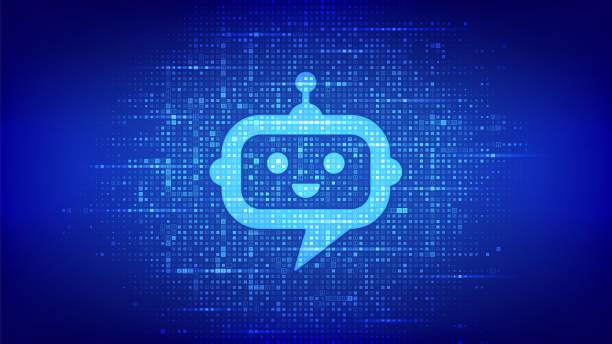Optimizing Chatbot Experiences with Advanced NLP Techniques
 Pedro Nwoye
Pedro Nwoye
I. Introduction
In today's digital landscape, chatbots are fast becoming the face of many user interactions. To offer truly exceptional experiences, chatbots need to go beyond simple keyword matching and embrace the power of Advanced Natural Language Processing (NLP). This document dives deep into the world of NLP, providing developers with the tools and techniques to create intelligent, engaging, and user-friendly chatbots.
II. Understanding NLP in Chatbot Development
A. Overview of NLP:
NLP is a branch of artificial intelligence that allows computers to understand and process human language. This includes interpreting the meaning of words, identifying sentiment, and analyzing context. In chatbot development, NLP plays a pivotal role in crafting intelligent interfaces that can:
Understand user intent: Go beyond surface-level keywords to grasp the meaning behind user queries and provide accurate responses.
Engage in natural conversations: Hold fluent and context-aware dialogues, creating a more human-like and enjoyable experience for users.
Personalize interactions: Adapt responses based on user preferences and historical data, delivering relevant and timely information.
B. Impact of NLP on User Engagement:
Effective NLP implementation significantly impacts user satisfaction and engagement with chatbots. By employing advanced techniques, you can:
Reduce user frustration: Minimize misunderstanding and misinterpretations, leading to smoother and more productive interactions.
Increase user trust: Enhance the perceived intelligence and reliability of your chatbot, encouraging users to rely on it for information and services.
Boost brand loyalty: Create positive user experiences that foster long-term engagement and promote brand association with innovation and efficiency.
III. Essential NLP Techniques for Chatbots
A. Sentiment Analysis:
Understanding user emotions is crucial for tailoring responses and providing empathetic support. Sentiment analysis techniques, leveraging machine learning algorithms, can:
Identify positive, negative, or neutral sentiment: Analyze the emotional tone of user queries and adjust responses accordingly.
Provide targeted support: Offer solutions or resources addressing specific user emotions, like frustration or confusion.
Drive continuous improvement: Monitor user sentiment over time to identify areas for improvement and enhance overall chatbot satisfaction.
B. Entity Recognition:
Extracting key entities (names, locations, dates, etc.) from user queries allows chatbots to provide accurate and relevant responses. Entity recognition techniques can:
Understand user context: Extract crucial information from queries to fulfill requests efficiently, like booking appointments or finding specific products.
Minimize user effort: Eliminate the need for repetitive information input by accurately capturing user intent through entity recognition.
Personalize interactions: Leverage extracted entities to personalize responses and recommendations, offering a more seamless experience.
C. Context-Aware Processing:
Chatbots that understand the context of a conversation can deliver more coherent and engaging responses. Techniques like context-aware processing can:
Track conversation history: Keep track of previous interactions and user preferences to provide consistent and relevant responses.
Anticipate user needs: Analyze conversation flow to predict user intent and proactively offer relevant information or suggestions.
Maintain focus: Avoid topic digressions or irrelevant responses by grounding conversational flow in the established context.
IV. Integrating Machine Learning for Personalization
By employing machine learning algorithms, chatbots can learn from user interactions and personalize their responses accordingly. This includes:
Recommending relevant products or services: Analyze user preferences and purchase history to offer personalized suggestions.
Providing custom support: Tailor responses to individual user needs and preferences, enhancing the feeling of a one-on-one interaction.
Optimizing chatbot performance: Continuously improve chatbot accuracy and response relevance by learning from user feedback and historical data.
V. Overcoming NLP Challenges in Chatbot Development
Implementing NLP in chatbots comes with its own set of challenges. Here's how to tackle some common pitfalls:
A. Identifying Common Challenges:
Ambiguity in user queries: Users often express themselves loosely or imprecisely, requiring the chatbot to infer meaning and intent.
Limited training data: NLP models rely on extensive data for optimal performance. Insufficient training data can lead to inaccurate responses.
Evolving language: Language usage and trends continually change, requiring NLP models to be adaptable and updated regularly.
B. Solutions and Best Practices:
Leverage human-in-the-loop feedback: Incorporate human input and review mechanisms to address limitations in NLP models and improve accuracy.
Invest in high-quality training data: Collect diverse and representative data to train NLP models for various scenarios and user languages.
Continuously monitor and update: Regularly analyze chatbot performance and refine NLP models based on user feedback and new data.
VI. Conclusion
By harnessing the power of advanced NLP techniques and overcoming the associated challenges, developers can create chatbots thaTransform user interactions: Move beyond simple button clicks and scripted responses to deliver natural, engaging conversations that mirror human-to-human interactions.
Boost user satisfaction: Minimize frustration and misunderstandings, leading to positive experiences that keep users coming back.
Increase brand loyalty: Create a strong brand association with innovation, efficiency, and user-centricity, fostering long-term loyalty and trust.
Drive business value: Offer personalized recommendations, targeted support, and efficient problem-solving, ultimately contributing to increased sales, conversions, and customer satisfaction metrics.
Remember, NLP is an evolving field, and continuously learning and adapting is crucial for success. By staying up-to-date of advancements, refining your NLP models, and incorporating user feedback, you can ensure your chatbos remain at the forefront of intelligent and engaging user experiences.
Subscribe to my newsletter
Read articles from Pedro Nwoye directly inside your inbox. Subscribe to the newsletter, and don't miss out.
Written by
